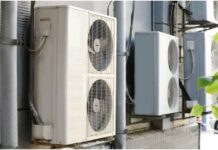Winter is a beautiful season with cold, crisp air and snow-covered landscapes. However, it also brings harsh weather conditions that can wreak havoc on your home if you’re not prepared. From frozen pipes to power outages, there are many potential risks during the winter months.
In this comprehensive guide, we will discuss essential steps to protect your home and keep yourself and your family safe during the winter season.
Preparing Your Home for Winter
Before the winter season arrives, it is crucial to prepare your home for potential hazards. Here are some important tasks to complete before the cold weather sets in:
1. Inspect and Maintain Your Heating System
Your heating system is essential in keeping your home warm during the winter. It’s vital to have it inspected and maintained by a professional before the start of the season. A well-maintained heating system will not only keep you warm but also save you money on energy bills.
2. Check for Drafts and Insulate Properly
Drafts in your home can significantly increase your heating bills and make your home feel cold and uncomfortable. Check for any drafty areas, such as windows or doors, and fix them with weather-stripping or caulking. It’s also crucial to insulate your attic and walls properly to prevent heat loss.
3. Clean Out Your Gutters
Gutters are essential in redirecting water away from your home’s foundation. However, they can easily get clogged with leaves and debris during the fall season. Before winter arrives, make sure to clean out your gutters and install gutter guards to prevent any blockages like leaves and other debris.
Protecting Your Home During Winter
Once you have prepared your home for winter, there are still some steps you can take to protect it during the cold months.
1. Prevent Frozen Pipes
Frozen pipes are a common issue during winter, and they can lead to costly repairs. To prevent this, keep your home’s temperature above 55 degrees Fahrenheit, even when you’re away. You can also open cabinet doors under sinks to allow warm air to circulate the pipes.
2. Use Caution When Using Alternative Heating Sources
If you use alternative heating sources such as space heaters, make sure to use them safely and according to the manufacturer’s instructions. Keep flammable objects away from the heater and never leave them unattended.
3. Have an Emergency Kit Ready
Power outages are common during winter storms, so it’s important to have an emergency kit ready. This should include items such as flashlights, batteries, non-perishable food, and a first aid kit. The kit should also include a plan for how to stay warm if your heating system is not working.
After the Storm: Cleaning Up and Making Repairs
Even with all the precautions, sometimes winter storms can still cause damage to your home. Here are some tasks you can do after a storm to clean up and make repairs:
1. Remove Snow and Ice from Your Roof
Heavy snow and ice buildup on your roof can cause damage or even collapse. Use a roof rake to remove excess snow, and use calcium chloride to melt any ice dams.
2. Check for Any Damage
After the storm has passed, check your home’s exterior for any visible damage such as broken shingles, cracks in the foundation, or fallen trees. It’s also a good idea to check your heating and plumbing systems for any damage.
3. Contact Your Insurance Company
If your home has sustained significant damage, it’s important to contact your insurance company as soon as possible. They can guide you through the claims process and help cover the cost of repairs.
Conclusion
Winter can bring many challenges to homeowners, but with proper preparation and caution, you can protect your home and keep yourself and your family safe. Remember to take the necessary steps before, during, and after a winter storm to minimize any potential damage. Stay warm and stay safe this winter season!




















